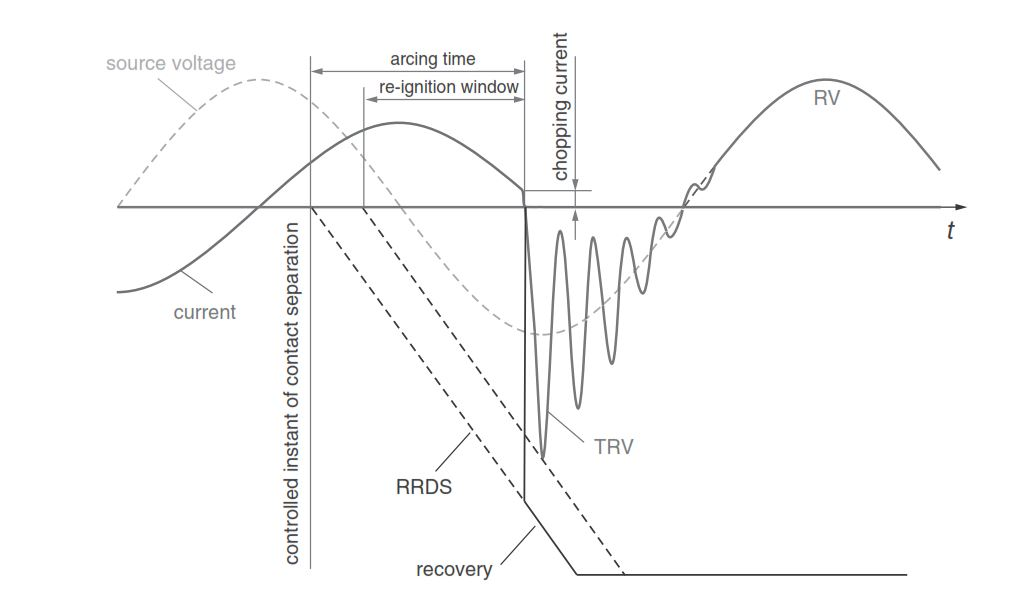
During de-energization of shunt reactors, over voltages may be generated by multiple re ignitions.
All circuit-breakers exhibit a high probability of re-ignition for arcing times shorter than a minimum. Re-ignitions will generate high-frequency transients, typically hundreds of kHz, in both reactor voltage and current, which may affect circuit breaker elements. The very steep voltage transients caused by re-ignitions will be unevenly distributed across the reactor winding, with the highest stress on the initial turns.
In Fig we can see avoidance of re-ignition with contact separation to the left side of the re-ignition window at controlled switching off of an inductive load.
Therefore, it is desirable to eliminate re-ignitions. Longer arcing times of course mean higher chopping over voltages, but – since re-ignition over voltages are normally more severe than chopping over voltages the use of controlled switching to increase arcing times to avoid re-ignition is highly advisable. This is done in practice by switching synchronous relays that connected to switchgear These relays control the interruptions.



